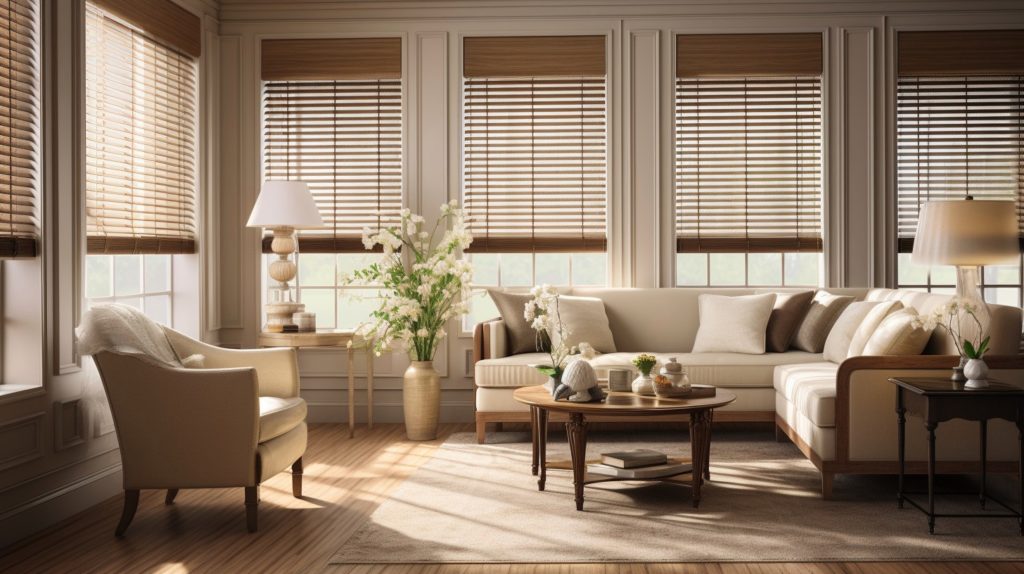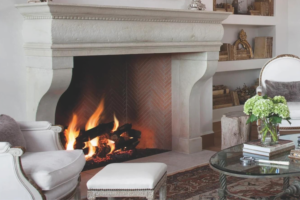Fauxwood Shutters: A Sustainable and Stylish Choice

In the ever-evolving landscape of window treatments, the quest for sustainability has become a defining factor in homeowners’ choices. Fauxwood shutters emerge as a compelling option, seamlessly blending eco-consciousness with timeless style. This article navigates the intricate realm of Fauxwood shutters, unravelling the myriad reasons why they stand as a sustainable and stylish choice for the modern homeowner.
1. The Essence of Fauxwood
Before delving into the sustainability aspects, understanding the essence of Fauxwood is crucial. Fauxwood, as the name suggests, mimics the appearance of real wood but is crafted from synthetic materials such as PVC, vinyl, or a combination of recycled wood and synthetic compounds. This replication captures the aesthetic charm of wood while offering enhanced durability and resistance to environmental factors.
2. Environmental Consciousness
One of the key appeals of Fauxwood shutters lies in their eco-friendly composition. The use of synthetic materials, especially those derived from recycled sources, contributes to reducing the demand for new timber. As deforestation remains a global concern, opting for Fauxwood shutters becomes a conscious choice to mitigate the environmental impact associated with traditional wood shutters.
3. Durability and Longevity
Sustainability is inherently linked to durability, and Fauxwood shutters excel in this regard. Unlike their wooden counterparts, Fauxwood shutters are resistant to moisture, making them an ideal choice for humid environments such as bathrooms and kitchens. The resistance to warping, cracking, and fading ensures that Fauxwood shutters maintain their pristine appearance over the years, extending their lifespan and reducing the need for frequent replacements.
4. Low Maintenance and Easy Cleaning
The sustainability of Fauxwood shutters extends to the ease of maintenance. Traditional wood shutters often require meticulous care to prevent moisture damage or insect infestations. In contrast, Fauxwood shutters are impervious to moisture, eliminating the risk of decay and simplifying the maintenance routine. A simple wipe with a damp cloth is usually sufficient to keep Fauxwood shutters looking as good as new, reducing the need for harsh cleaning agents and promoting a more sustainable cleaning approach.
5. Energy Efficiency and Insulation
Fauxwood shutters contribute to energy efficiency, another vital aspect of sustainability. The synthetic composition of Fauxwood provides an additional layer of insulation, helping to regulate indoor temperatures. This insulation not only enhances the comfort of living spaces but also reduces the reliance on heating or cooling systems, thereby lowering energy consumption and promoting a more sustainable home environment.
6. Versatility in Design
The stylish allure of Fauxwood shutters lies in their versatility in design. Homeowners can choose from an array of finishes and styles that mimic the natural grains and textures of real wood. This versatility not only satisfies aesthetic preferences but also allows homeowners to seamlessly integrate Fauxwood shutters into various design schemes, from traditional to contemporary, enhancing their appeal and ensuring they remain a timeless choice.
7. Affordability and Accessibility
Sustainability becomes more impactful when it is accessible to a broader audience. Fauxwood shutters offer an affordable alternative to real wood, making sustainable choices within reach for homeowners with various budget considerations. The accessibility of Fauxwood shutters contributes to their widespread adoption, amplifying their positive impact on the environment through a larger and more diverse consumer base.
8. Reduction in Environmental Footprint
Choosing Fauxwood shutters over traditional wood contributes to a reduction in the overall environmental footprint. The manufacturing process of Fauxwood shutters, especially those made from recycled materials, requires fewer resources, and generates less waste compared to the production of real wood shutters. This reduction in environmental impact aligns with the growing awareness of sustainable consumer choices and the desire to lessen one’s ecological footprint.
9. Resistance to Pests
Wooden shutters are susceptible to pest infestations, which can lead to the need for chemical treatments or, in extreme cases, replacement. Fauxwood shutters, being synthetic, are inherently resistant to pests such as termites and wood-boring insects. This resistance not only preserves the integrity of the shutters but also eliminates the need for harmful pesticides, aligning with a more sustainable and eco-friendly approach to home maintenance.
10. Adapting to Changing Climates
As climate change brings about shifts in weather patterns, the ability of home elements to adapt becomes crucial. Fauxwood shutters, designed to resist moisture and withstand changing climates, provide a resilient solution for homeowners facing unpredictable environmental conditions. Their adaptability ensures that they remain a steadfast choice, regardless of the external challenges posed by climate fluctuations.
In conclusion, Fauxwood shutters emerge as a sustainable and stylish choice for homeowners seeking to make environmentally conscious decisions without compromising on aesthetics or functionality. From their eco-friendly composition to their durability, low maintenance, and energy-efficient properties, Fauxwood shutters exemplify how sustainable choices can seamlessly integrate into the fabric of modern living. As the demand for sustainable home solutions continues to rise, Fauxwood shutters stand as a beacon, offering a path towards a more eco-conscious and stylish future in window treatments.





